GMA’s Robin Roberts Says This Was Her First Sign of Cancer
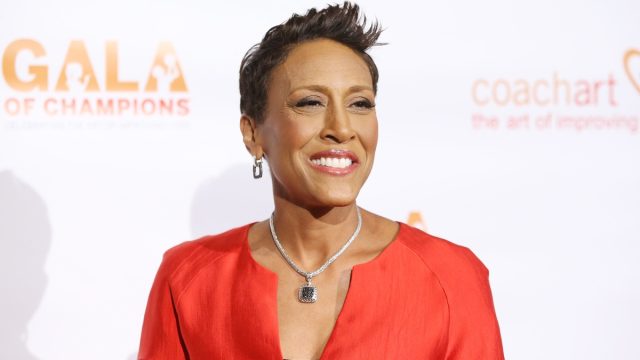
A veteran TV broadcaster, Robin Roberts became a co-anchor for Good Morning America in 2005, making her a beloved household name. “To be able to share people’s stories, from all walks of life, that’s just something that never, ever will get old,” she said of her job in 2020. But perhaps the most important story Roberts ever shared on the show was her own: In 2007, Roberts opened up to fans about receiving a devastating breast cancer diagnosis. Her battle with cancer would become further complicated when the star developed a secondary form of cancer following her treatment—a journey she famously chronicled on the show. Read on to learn about Roberts’ fight against a particularly aggressive form of cancer, and to find out what she says was the first sign of a problem.
RELATED: HGTV’s Tarek El Moussa Says This Was His First Thyroid Cancer Symptom.
Robin Roberts says her first sign of cancer was a lump in her breast.
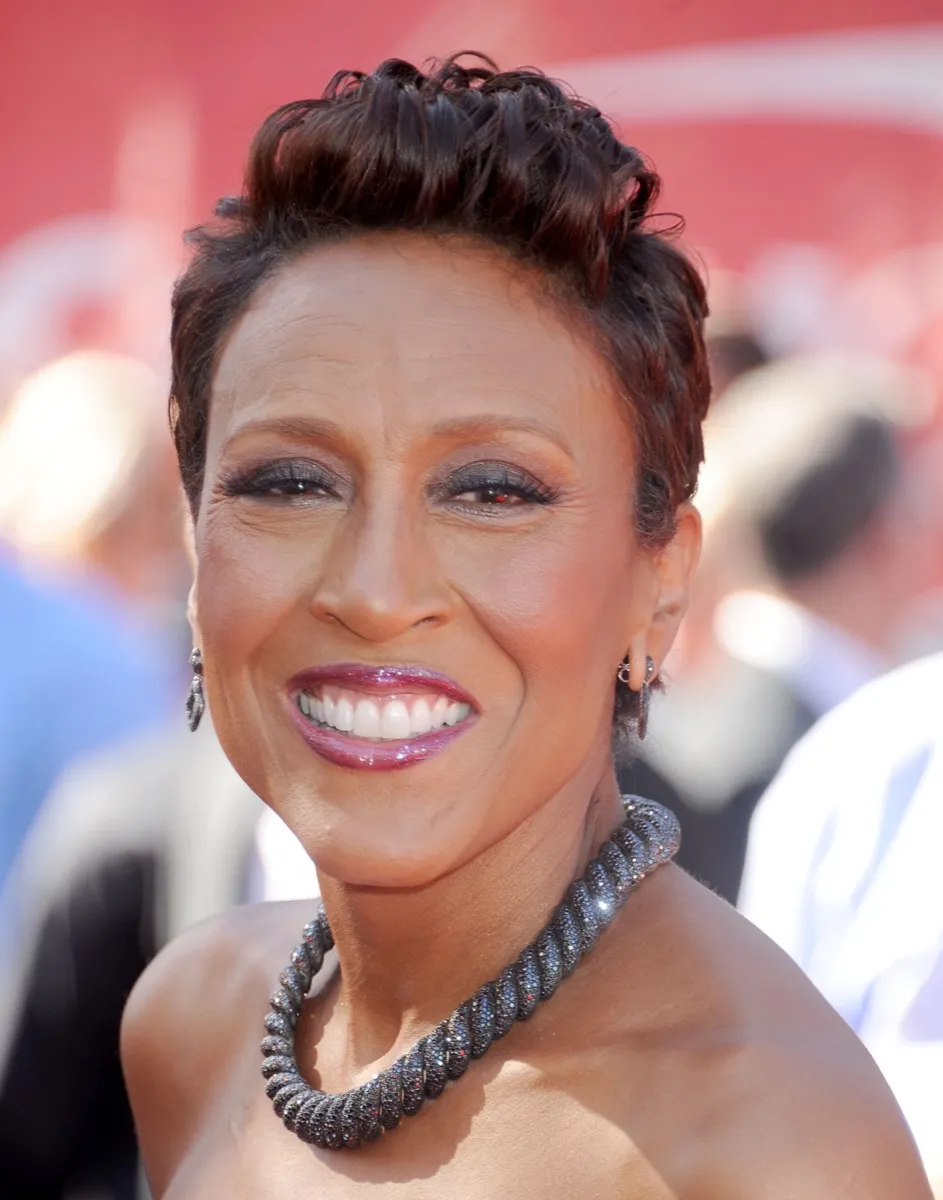
The Good Morning America anchor was otherwise feeling well when she discovered her very first breast cancer symptom. “I was living happily ever after, with no family history of cancer, and found a lump in my right breast. Thankfully, I had done self-exams, and so I realized that this lump was different and I needed to have it examined,” Roberts recalled in 2018 while speaking with Cure Today.
The star quickly learned that the particular type of cancer she had, known as “triple-negative” breast cancer (TNBC), disproportionately affects women under 40, Black women, and women who have a BRCA1 genetic mutation. “TNBC differs from other types of invasive breast cancer in that it tends to grow and spread faster, has fewer treatment options, and tends to have a worse prognosis (outcome),” explains the American Cancer Society.
RELATED: Two-Time Cancer Survivor Kathy Bates Warns Others Never to Do This.
An initial mammogram missed the tumor.
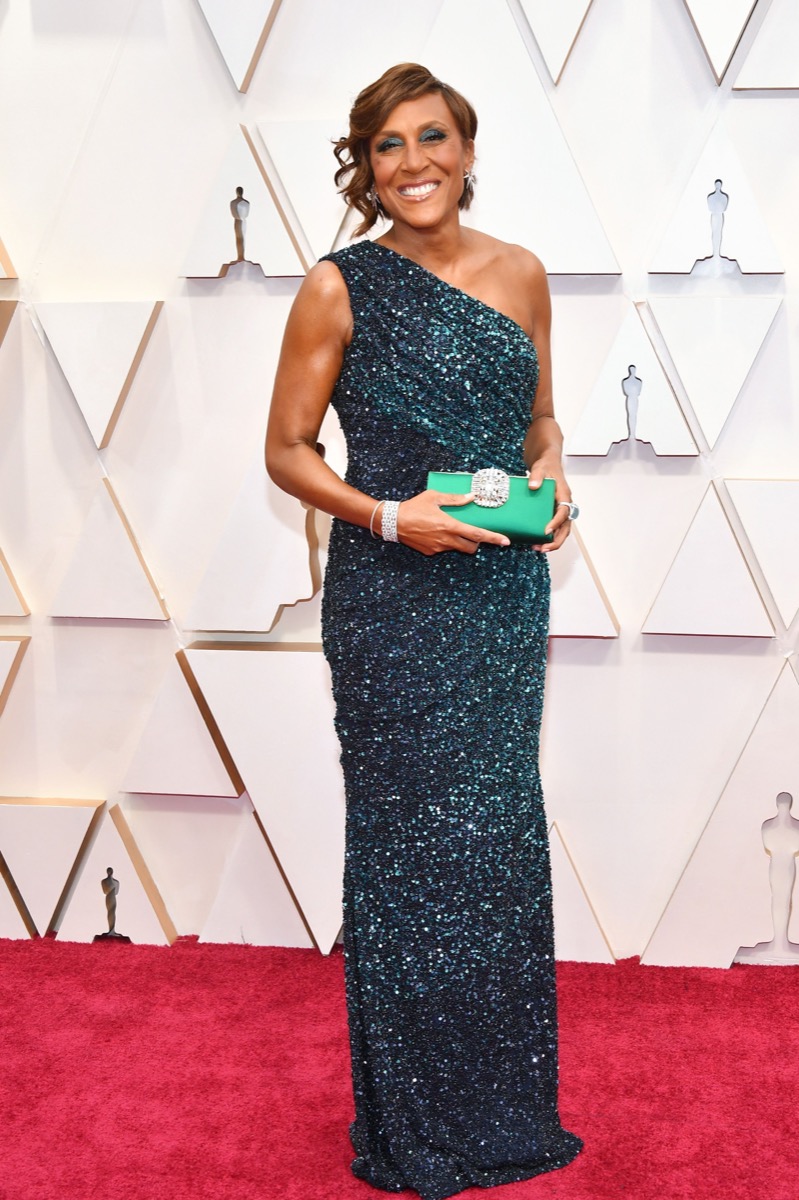
Upon discovering the suspicious lump in her breast, Roberts went for a mammogram, which appeared normal upon first inspection. Thankfully, her doctor ordered a follow-up ultrasound for a closer look, and later performed a needle biopsy. Together, these tests confirmed her breast cancer diagnosis.
Today, Roberts highlights her own experience to stress the importance of rigorous screening. “I’m a fairly educated person, and I didn’t know a lot until I was diagnosed,” the anchor told Cure. “I wanted other people to know that, yes, a mammogram is still considered the gold standard, but if you have dense breast tissue, to ask for secondary screening,” she said.
Friends and fans responded to Roberts with overwhelming support—but the most rewarding part of sharing her story, she says, was that it inspired others to get their first mammogram. “I was very touched by hearing that so many people immediately went out and got screened. One bunch of girlfriends said they got a limo and made a date of getting their mammograms and then went to a party, and that they were going to do it annually so they could keep an eye on each other,” she told Cure.
She developed a secondary condition following her treatment.
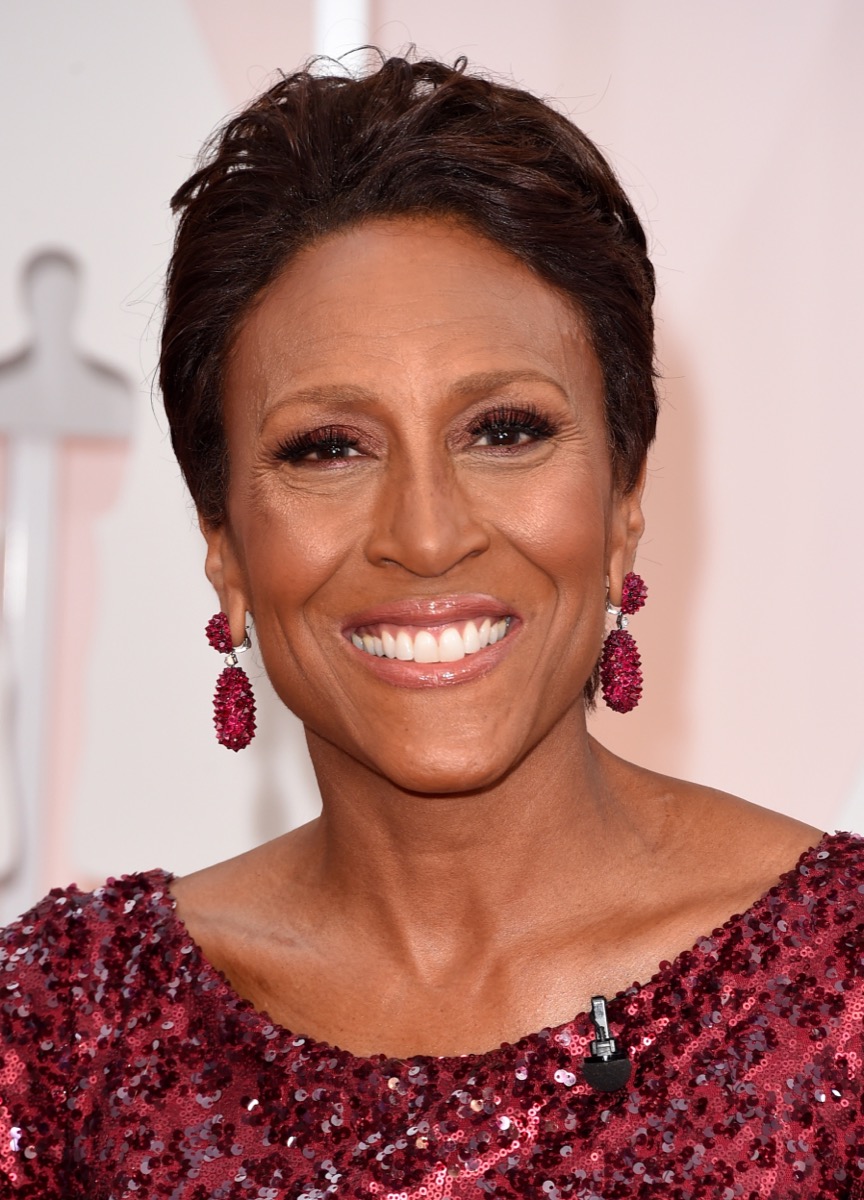
Unfortunately, five years after undergoing extensive chemotherapy treatment, Roberts developed a secondary condition known as myelodysplastic syndromes (MDS), which is also considered a form of cancer. “Because I was triple-negative and young, my chemotherapy and radiation had to be aggressive,” she explained to Cure. “I have no regrets whatsoever that I received the treatment that I did, because it saved my life. It is unfortunate that I had the really, really rare experience of finding that the treatment that saved my life had later put it in peril. I’m cautious about discussing that, because I’d never want anybody to avoid treatment for fear it could lead to something else. You have to fight the battle that’s in front of you.”
The American Cancer Society explains that MDS occurs when the blood-forming cells in our bone marrow malfunction, leading to imbalances in the different types of blood cells we need to stay healthy. For Roberts, the condition required a life-saving bone marrow transplant, which she underwent in 2012. The GMA anchor is now a vocal advocate for bone marrow donations for transplants, which could save up to 18,000 lives per year if everyone in need found a match.
RELATED: For more health news sent directly to your inbox, sign up for our daily newsletter.
Roberts is now supporting her partner through a breast cancer diagnosis.
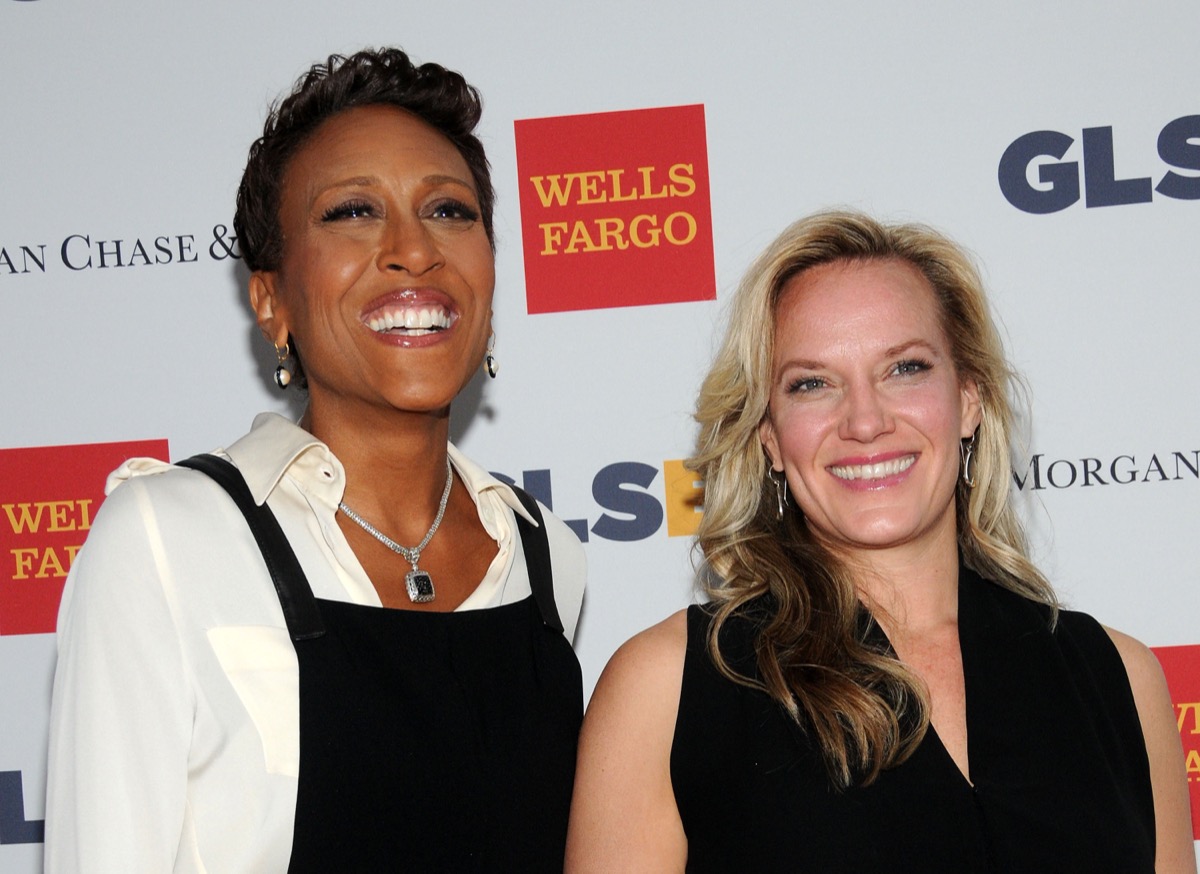
In Feb. 2022, Robins announced that fans can expect her to periodically step away from Good Morning America while she supports her partner, Amber Laign, through her own breast cancer treatment. “My sweet Amber wanted me to tell you something that she’s been facing. At the end of last year, Amber was diagnosed with breast cancer,” the TV host said in a video posted to Twitter. “She had surgery last month and this morning will begin chemotherapy,” she added.
Partnered for nearly two decades, Laign was a pillar of support when Roberts was the one in need. “She and I have been together almost 17 years, and have helped each other through our challenges like my journey with cancer. It’s my turn now to be there for her like she was for me,” Roberts continued. “And that means I’ll be away from GMA from time to time, like this morning as she starts chemo.”
She concluded her message by sending her well-wishes to viewers who may also be contending with serious health concerns. “We know many, many are facing cancer and other challenges. Like my mama said, ‘Everybody’s got something.’ Please know that you are in our prayers, and hopefully we’re in yours, too,” Roberts said.
RELATED: Al Roker Is Warning Everyone to Do This After His Cancer Diagnosis.